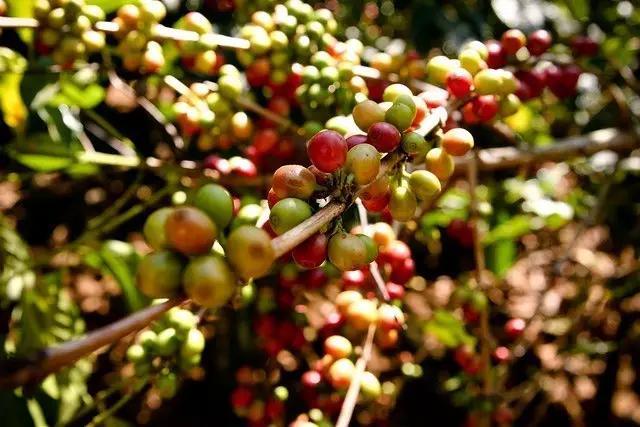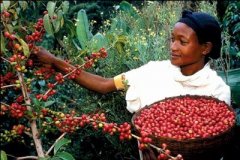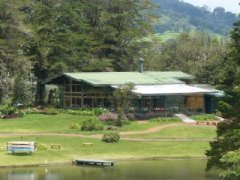Colombia Hope Manor Sunshine Rose Summer High quality Gesha High altitude
In December 2006, the Hope Manor bought the Cerro Azul in Colombia's Cauca Valley, the geographical environment is very close to Poquette, the warm air rising from the Cauca Valley and the cold air from the Pacific meet at the manor. The manor has 20 hectares of arable land between 1700 and 1950 meters above sea level, originally planted with Caturra. In September 2007, 35,000 rose summer trees were planted. Unexpectedly, two months later, some of the saplings died, and Rigoberto's brother wanted to give up, thinking that the wind was too cold for planting and should be changed to cattle pasture. Rigoberto refused to admit defeat, insisted on replanting, and planted windbreaks on the top so that the strong wind would not destroy the coffee shrubs.
The rosy summers survived and won the second place in the annual World Coffee Competition of the American Fine Coffee Association in 2012, and the rosy summers of the other two estates of Hope Manor. A total of three places in the top 10: second, third and seventh, creating an incredible treble.
Hope that the manor is different from other manors, with doctoral botanists, three professional cup surveyors, 100 full-time employees, and currently manages a manor under its jurisdiction. The estate is owned by the Herrera brothers. In fact, the grandfather of the Herrera brothers, who ran a coffee farm in the Trujillo district of Colombia, gradually declined, and the two brothers left Colombia. But they did not give up their dream of going back to their hometown to run a coffee farm.
The first estate that Herrera bought when he returned home was Trujillo's La Esperanza, which is very close to their grandfather's original farm and is now used as a regional headquarters. The manor itself is 100% organic, with a variety of coffee trees including Colombian species, Castillo, Caturra and more than 14000 organic roses. Next, Herrera bought four estates in Trujillo and Caicedonia, north of Trujillo. Together with the La Cardeida estate in Boquete, Panama, which was leased in 2005, it now has six estates and a total coffee planting area of 213 hectares.
Cafe Granja La Esperanza's estate is located in eight unique microclimate regions of the three Colombian mountains, giving their botanists an excellent opportunity to experiment with different microclimates and land flavors, different treatments, and different coffee varieties, combining the rationality of scientists, the sense of smell of businessmen and their insistence on the quality of coffee. For example, they create different treatment steps and norms for different microclimates and varieties. From seedling cultivation to export, there are 95 data points to manage all the data.
Hernando Tapasco's team, the lead botanist, set up a climate station on the estate to track weather data and help make harvest decisions. The data on the farm were collected continuously and analyzed once a week. After harvest, they will compare weather data, production data and cup test data and analyze the correlation. The harvesters of Rose Summer are strictly trained to collect only ripe cherry fruits and are paid by the day, unlike other manors by weight. In order to prevent workers from harvesting unqualified cherries in order to improve their performance, half of the harvesting workers have more than six years of experience. After the fruit is harvested, it will be sent to the central processing plant in Hope Manor, and each batch of rose will be marked and dealt with separately. First go through the drying stage three days ago in the sun field, and then move to the small tower to dry. Strict quality control is another key. There are 40, 000 to 45, 000 rose trees in Cerro Azul Manor, of which only 5-7000 can produce rose beans with the Cerro Azul brand.

Important Notice :
前街咖啡 FrontStreet Coffee has moved to new addredd:
FrontStreet Coffee Address: 315,Donghua East Road,GuangZhou
Tel:020 38364473
- Prev

Essel 90 + levelup series NistuRuz Niluju boutique coffee
Ninety plus is an internationally renowned coffee bean production and sales company, and is famous for providing rare and unique raw coffee beans. Joseph Brodsky officially founded Ninety plus in 2007, and since the next year, we can see traces of Ninety plus winning awards in large and small coffee competitions around the world. WBC World Coffee University in 2013.
- Next

Kenyan AA family Tuji Gatugi handles boutique coffee
Kenya Nyeri Gatugi AA country: Kenya Grade: AA producing area: Nyeri Central Mountain area altitude: 1600-2300 m soil quality: volcanic Clay treatment method: washing varieties: SL 28, SL 34 processing Plant: Gatugi processing Plant producer: small Coffee Flavor Flavor: floral, blackcurrant, Cranberry
Related
- Does Rose Summer choose Blue, Green or Red? Detailed explanation of Rose Summer Coffee plots and Classification in Panamanian Jade Manor
- What is the difference between the origin, producing area, processing plant, cooperative and manor of coffee beans?
- How fine does the espresso powder fit? how to grind the espresso?
- Sca coffee roasting degree color card coffee roasting degree 8 roasting color values what do you mean?
- The practice of lattes: how to make lattes at home
- Introduction to Indonesian Fine Coffee beans-- Java Coffee producing area of Indonesian Arabica Coffee
- How much will the flavor of light and medium roasted rose summer be expressed? What baking level is rose summer suitable for?
- Introduction to the characteristics of washing, sun-drying or wet-planing coffee commonly used in Mantenin, Indonesia
- Price characteristics of Arabica Coffee Bean Starbucks introduction to Manning Coffee Bean Taste producing area Variety Manor
- What is the authentic Yega flavor? What are the flavor characteristics of the really excellent Yejasuffi coffee beans?

